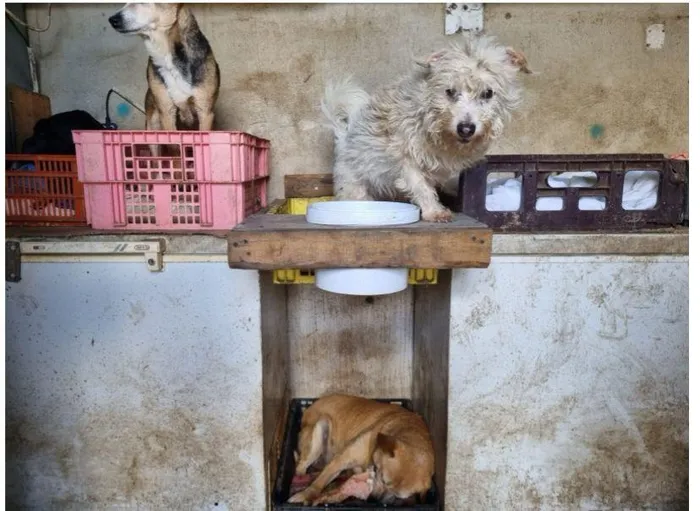'Stop funding cruelty'

Paws-a-While, a Plumstead animal welfare organisation, is sharing the top red flags and accepted standards required for animal rescues and shelters.
Image: supplied
Not all animal rescues are what they seem; behind the heartwarming posts and urgent pleas for help, some hide neglect, exploitation, or even abuse.
This is the warning from Carolyn Dudgeon, founder of Paws-A-While, a Plumstead-based animal welfare initiative focused on pet adoptions, sterilisation drives, and community education to reduce the number of homeless animals.
In South Africa, animal welfare is largely unregulated. While the NSPCA and its branches are governed, most animal charities and shelters operate without oversight, and once non-profit status is granted, there’s no system to ensure these organisations maintain ethics standards or accountability.
Ms Dudgeon said cruelty masquerading as compassion is far too common.
“People assume that anyone running an animal rescue has the animals' best interests at heart, but we’ve seen time and time again that’s not always the case. From overcrowding, lack of vet care to outright fraud, there are rescues that do more harm than good. It’s up to the public to ask the tough questions before they give their support.”
She shares some red flags to watch for and essential standards to expect from a legitimate rescue:
- Sterilisation, vaccinations, and proper vet care are non-negotiable
Rescues must be active in verified sterilisation projects and only use qualified, South African Veterinary Council (SAVC) registered professionals. Anything less risks the health of animals and the public.
- Beware of personal bank accounts
A legitimate charity should have a registered bank account that is audited every year. Request a bank account confirmation document from within the last three months to ensure your hard-earned money is truly helping an animal in need.
- Social media emotional blackmail
Be wary of rescues using emotional manipulation or threats to secure donations. Constantly posting sick animals or using fear-based pleas can be signs of exploitation.
- Fake shelters and misleading information
Always visit the shelter before offering support. Ensure it’s a real, well-maintained facility with clean enclosures, adequate space, proper records, and trained staff. A credible rescue should have a fire safety plan, be affiliated with a veterinary facility, and maintain an open-door policy for public access.
- Overcrowding and fast adoptions are red flags
"Overcrowded, no-kill shelters often become breeding grounds for disease and suffering. Claims that every animal is suitable for any home or that adoption is quick and easy are red flags. Ethical rescues practice quarantine, perform home checks, and rehome responsibly."
- Rescues that buy puppies contribute to problem
This practice only increases supply and demand, encouraging backyard breeding and exacerbating the problem.
- Suspicious vet bills
Veterinary expenses that are suspiciously high or low can indicate problems. High bills may suggest issues like fights in overcrowded conditions, while low bills could imply neglect. Animals should not suffer without proper veterinary care.
- Transparency and legitimacy
The organisation’s history matters. It should be registered, transparent, and willing to share its NPO registration, tax-exempt status, animal welfare certifications, and a valid tax clearance certificate. Annual audits, fair staff compensation, and clear funding sources are all signs of legitimacy. A genuine rescue also shares its mission, vision, and constitution — and operates openly. If not, that’s not a real rescue.
Always ask questions, trust your instincts, and remember: it’s up to you to report animal cruelty, and it’s also up to you to avoid funding it.
If you suspect animal cruelty, report it to your local SPCA or animal welfare organisation with a qualified and authorised animal welfare inspector.